The history of personal computers in advertising. Part 3: 1990s
Hi, Habr!
I came back and brought the third part of the history of personal computers in advertising. You can first refresh your memory and look at the first and second parts of the History, and then go under the cut and put a mean male tear in a fit of nostalgia for 1990. Some exhibits did not get here - namely, portable computers, which I wrote about in the post Advertising portable computers of the 1980s and 1990s .
This time, not only advertising of computers, but also advertising of software and a certain amount of peripheral equipment hit the post.
')
As always, I am waiting for your comments - what is worth adding!



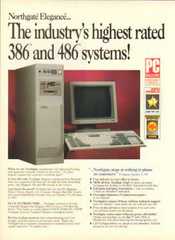
NeXT was founded by Steve Jobs in 1985. The NeXTcube workstation was made in the shape of a cube with sides of 12 inches. The black color of the case gave a special chic and focus on serious tasks, both in business and in science. She worked under the operating system NeXTSTEP. Produced and sold in 1990-1993.
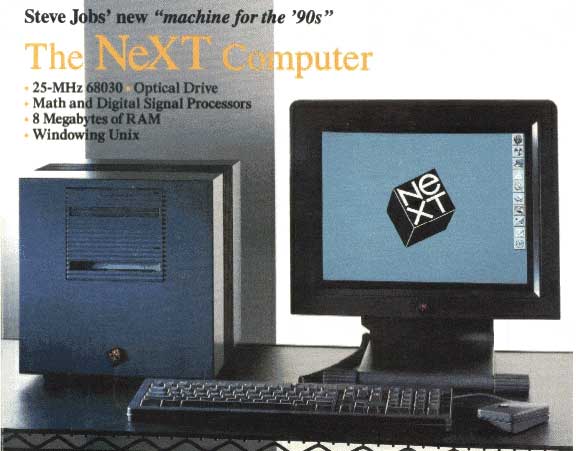
In 1990, Power Max 386/33 from Northgate Computer went on sale. This company was formed in 1987 and was engaged in receiving orders by mail and sending computers by mail. The company struggled for the consumer with lower prices than IBM and Compaq.
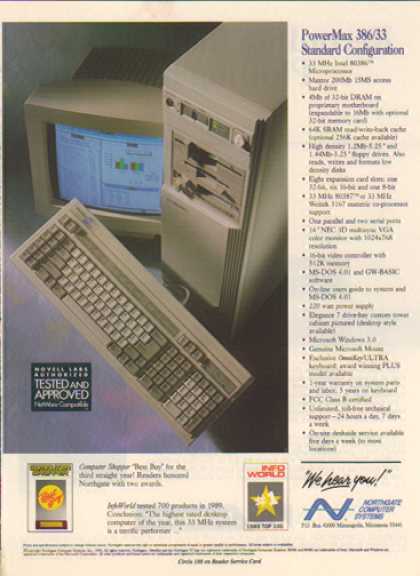
In 1991, Microsoft released Windows 3.0. It is thanks to this release, the company has become a competitor to the Macintosh and Commodore Amiga in the area of operating systems with a graphical interface. Windows 3.x is an add-on system over DOS. This is a TV commercial for Windows 3.0 or Windows 3.1, introduced in 1991.
Hell's minute - Japanese advertising Windows 3.1, made in the best traditions.
“More power, more speed, better technologies” from Compaq in 1990.
Minute portability - Modgraph GX-2386 Ultra VGA Portable.
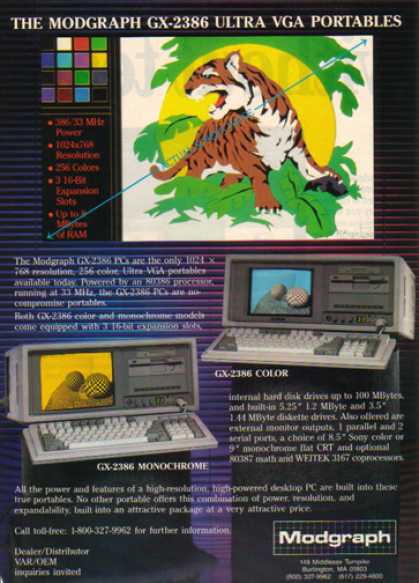
CSS Laboratories Server in 1990 releases 486.
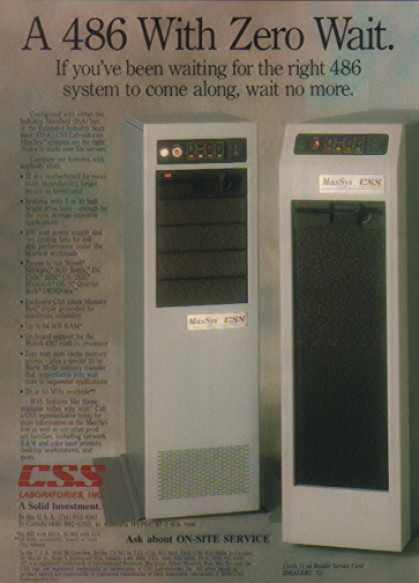
Article about interactive tablets for the computer. "Sign here, please."
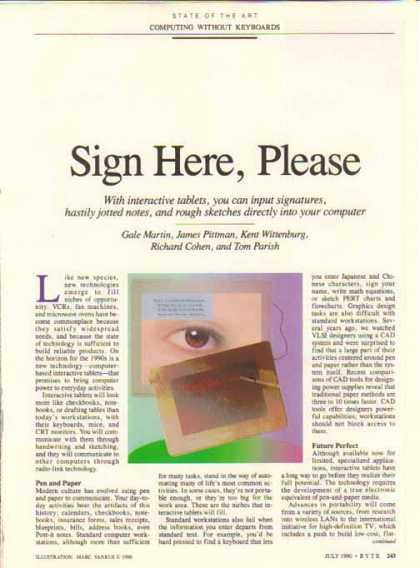
Xircom Pocket Network Adapters.
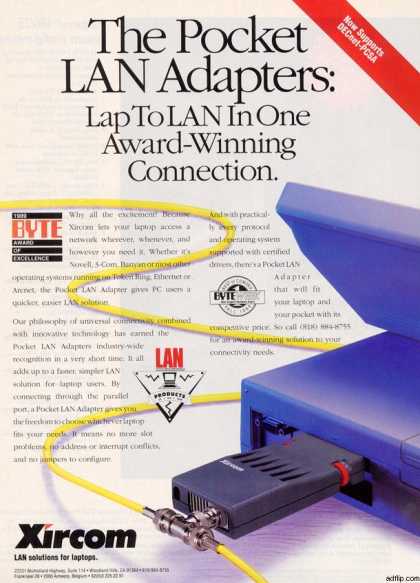
Lotus Advertising Software - Magellan 2.0, which makes it easy to find documents.

1990 Logitech Trackball. In order not to feel like an alien.
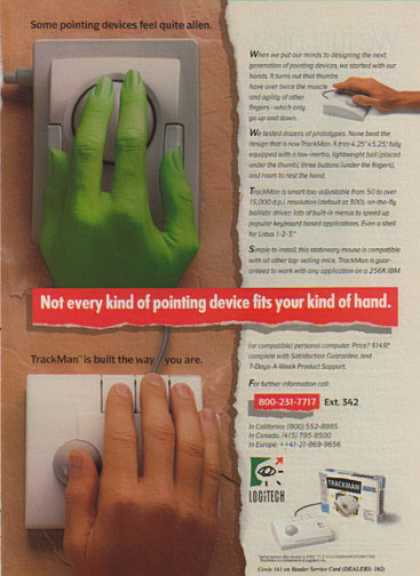
For 50 bucks, Microsoft offers a personal computer upgrade to “gain access to all PC memory.”
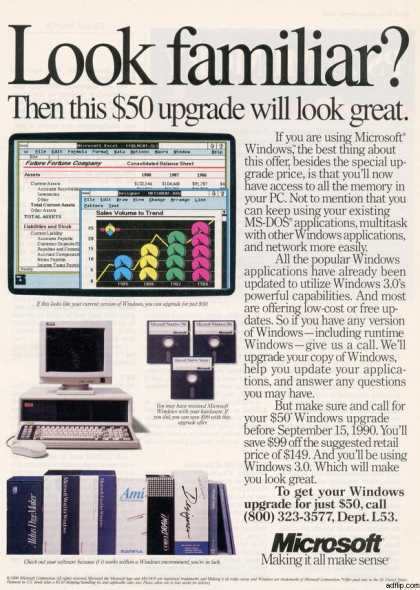
The page from the Northgate Computer catalog is 386 and 486 systems.

1992 - DELL advertising.

Advertising in the store. An opportunity to buy a computer on credit without overpayment or at a discount of 10%.
The Macintosh Performa series was sold from 1992 to 1997. On Habré there is an excellent review of Apple Macintosh Performa 475 .
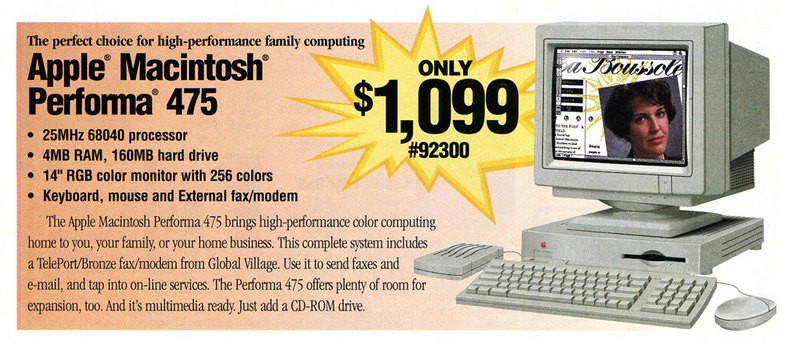

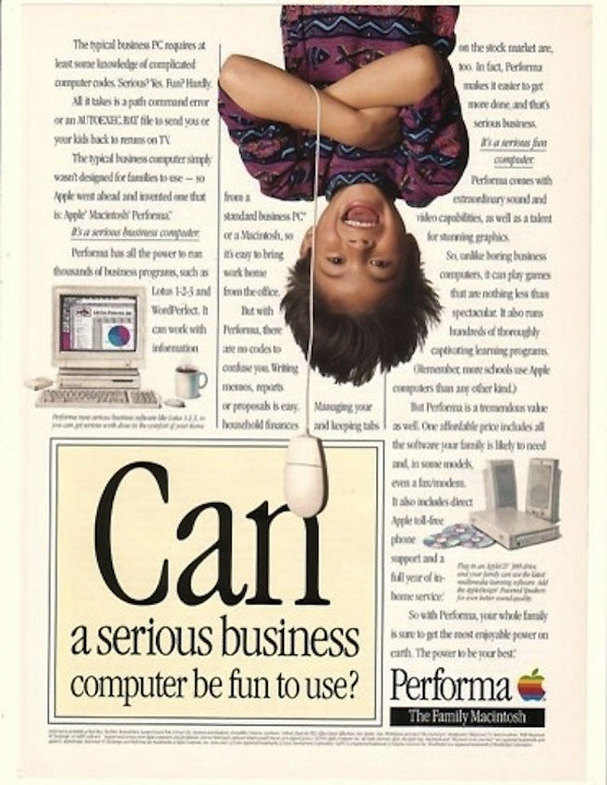
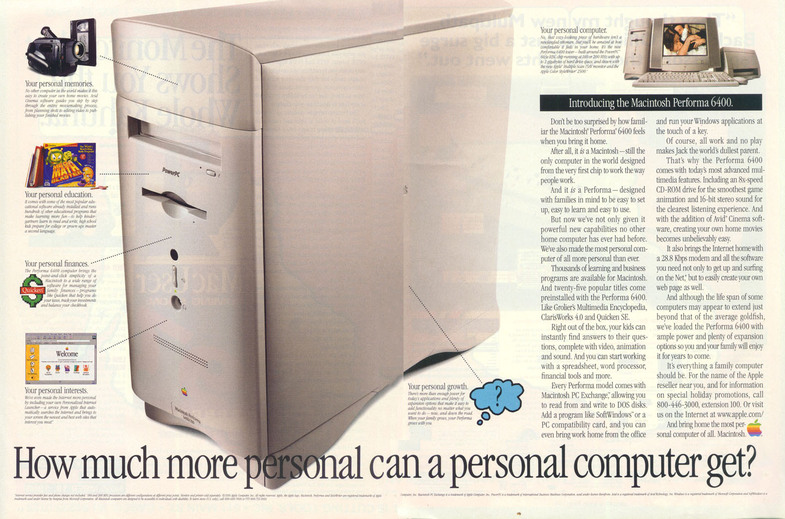
Outstanding people do not stand quietly! So I want to say something about the awl.
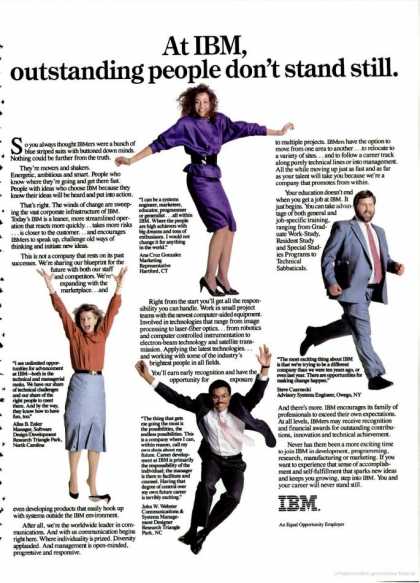
In 1994, Commodore filed for bankruptcy.
1993 IBM PS / 1 advertising. With Teddy Roosevelt.
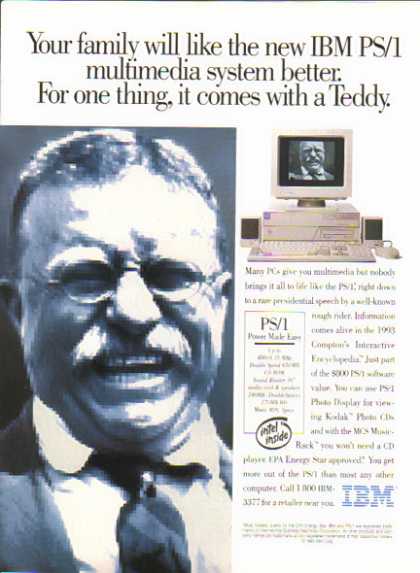
The network of Radioshack stores advertises 486 PCs. 1993 year.
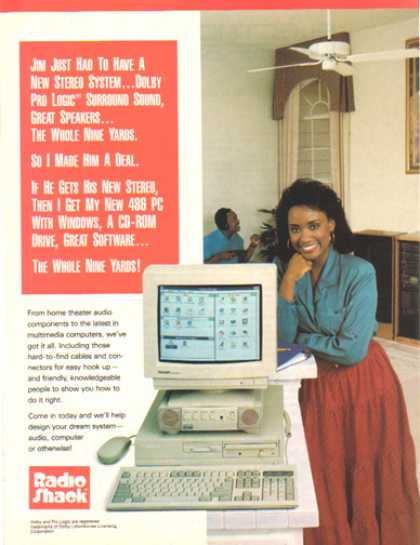
1996 Compaq LTE 500 "will be everything you want." Clickable "In 1994, Compaq released 4.8 million units of its products, and IBM - 4 million." Personal Computer Worldwide. Dataquest, June 26, 1995.
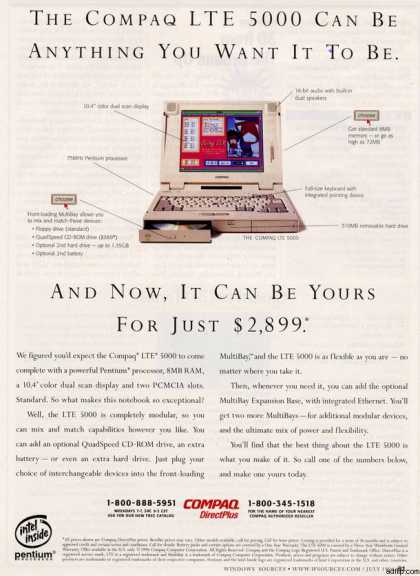
1997: Apple Power Macintosh ad.
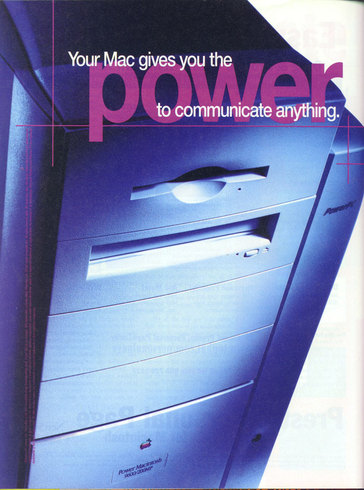
Apple Apple Power Mac G4 Computer 1999 brochure.
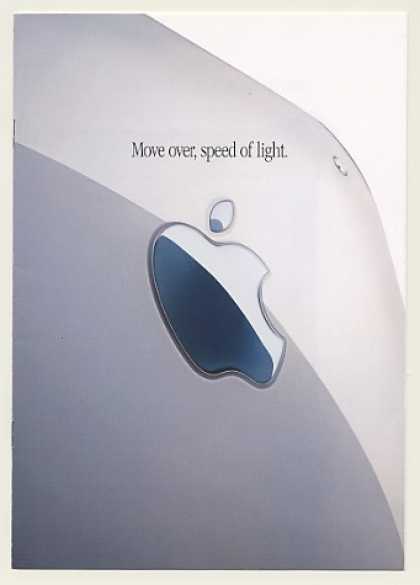
It is interesting:
Soviet personal computers
The history of personal computers in advertising. Part 1: 1970s
The history of personal computers in advertising. Part 2: 1980s
Advertising laptops of the 1980s and 1990s
Old advertisements for cell phones and smartphones (from the 1980s to the end of the 2000s)
I came back and brought the third part of the history of personal computers in advertising. You can first refresh your memory and look at the first and second parts of the History, and then go under the cut and put a mean male tear in a fit of nostalgia for 1990. Some exhibits did not get here - namely, portable computers, which I wrote about in the post Advertising portable computers of the 1980s and 1990s .
This time, not only advertising of computers, but also advertising of software and a certain amount of peripheral equipment hit the post.
')
As always, I am waiting for your comments - what is worth adding!




NeXT was founded by Steve Jobs in 1985. The NeXTcube workstation was made in the shape of a cube with sides of 12 inches. The black color of the case gave a special chic and focus on serious tasks, both in business and in science. She worked under the operating system NeXTSTEP. Produced and sold in 1990-1993.

In 1990, Power Max 386/33 from Northgate Computer went on sale. This company was formed in 1987 and was engaged in receiving orders by mail and sending computers by mail. The company struggled for the consumer with lower prices than IBM and Compaq.

In 1991, Microsoft released Windows 3.0. It is thanks to this release, the company has become a competitor to the Macintosh and Commodore Amiga in the area of operating systems with a graphical interface. Windows 3.x is an add-on system over DOS. This is a TV commercial for Windows 3.0 or Windows 3.1, introduced in 1991.
Hell's minute - Japanese advertising Windows 3.1, made in the best traditions.
“More power, more speed, better technologies” from Compaq in 1990.
Minute portability - Modgraph GX-2386 Ultra VGA Portable.

CSS Laboratories Server in 1990 releases 486.

Article about interactive tablets for the computer. "Sign here, please."

Xircom Pocket Network Adapters.

Lotus Advertising Software - Magellan 2.0, which makes it easy to find documents.

1990 Logitech Trackball. In order not to feel like an alien.

For 50 bucks, Microsoft offers a personal computer upgrade to “gain access to all PC memory.”

The page from the Northgate Computer catalog is 386 and 486 systems.

1992 - DELL advertising.

Advertising in the store. An opportunity to buy a computer on credit without overpayment or at a discount of 10%.
The Macintosh Performa series was sold from 1992 to 1997. On Habré there is an excellent review of Apple Macintosh Performa 475 .




Outstanding people do not stand quietly! So I want to say something about the awl.

In 1994, Commodore filed for bankruptcy.
1993 IBM PS / 1 advertising. With Teddy Roosevelt.

The network of Radioshack stores advertises 486 PCs. 1993 year.

1996 Compaq LTE 500 "will be everything you want." Clickable "In 1994, Compaq released 4.8 million units of its products, and IBM - 4 million." Personal Computer Worldwide. Dataquest, June 26, 1995.

1997: Apple Power Macintosh ad.

Apple Apple Power Mac G4 Computer 1999 brochure.

It is interesting:
Soviet personal computers
The history of personal computers in advertising. Part 1: 1970s
The history of personal computers in advertising. Part 2: 1980s
Advertising laptops of the 1980s and 1990s
Old advertisements for cell phones and smartphones (from the 1980s to the end of the 2000s)
Source: https://habr.com/ru/post/194176/
All Articles